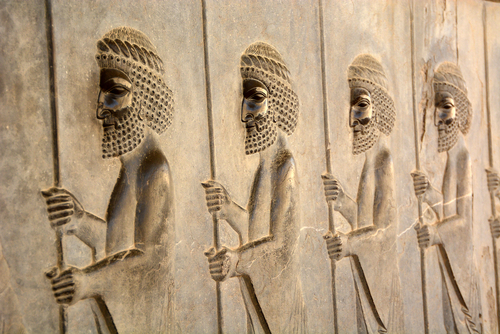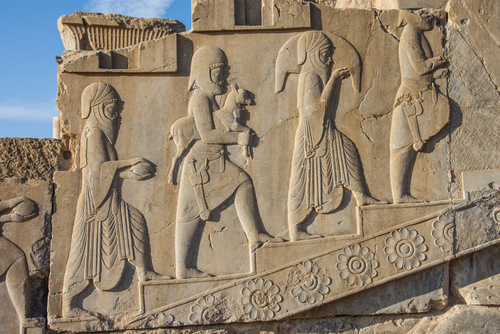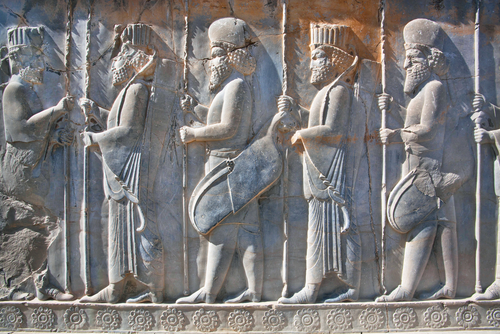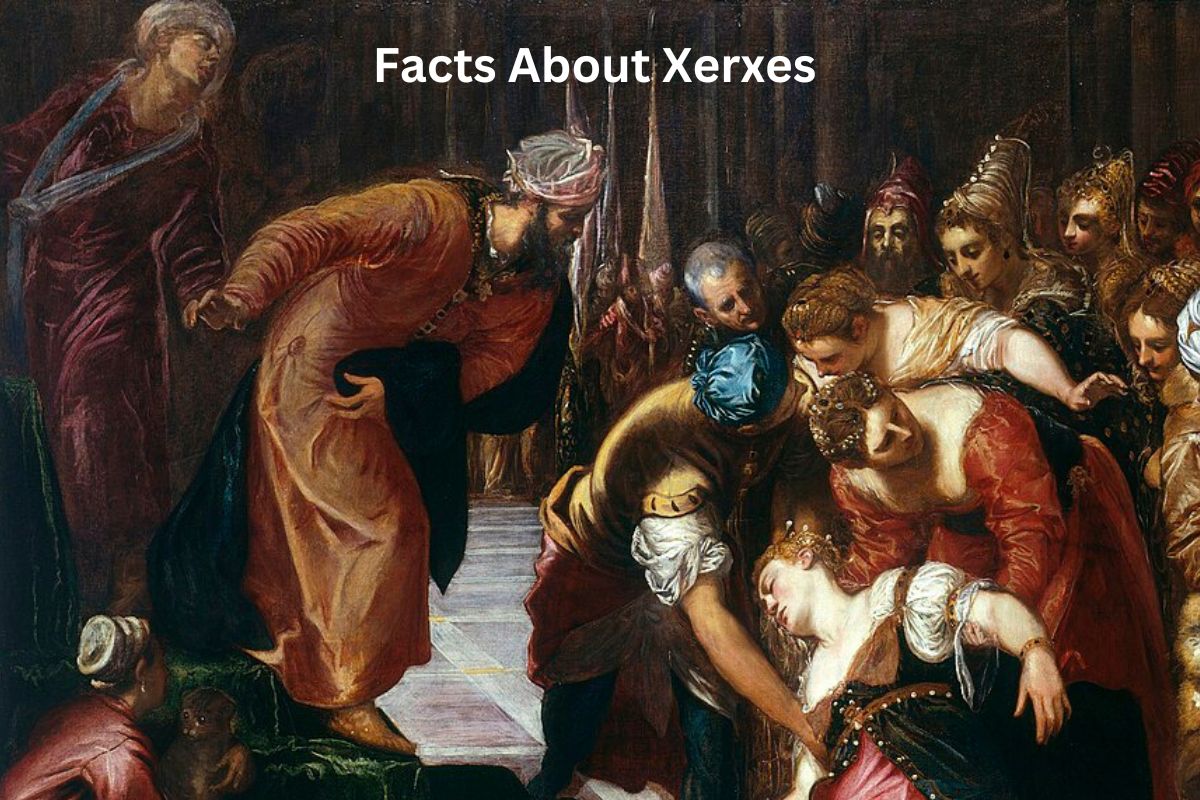Xerxes I, known as Xerxes the Great, was a Persian king who ruled from 486 BC to 465 BC.
He played a significant role in ancient history, known for his ambitious military campaigns, including the famous second Persian invasion of Greece, as well as his contributions to the Persian Empire’s cultural and architectural achievements.
This introduction provides a glimpse into the life and legacy of a ruler whose reign left an indelible mark on the ancient world.
Xerxes Facts
1. Xerxes I was a Persian king
Xerxes I, also known as Xerxes the Great, was a prominent Persian king who belonged to the Achaemenid dynasty. He was the son of King Darius I and Queen Atossa, and his reign marked an important period in the history of the Persian Empire.
2. He ruled from 486 BC to 465 BC
Xerxes ascended to the throne in 486 BC following the death of his father, Darius I. His reign lasted for 21 years, during which he oversaw various military campaigns, construction projects, and significant developments within the Persian Empire.

3. He led the second Persian invasion of Greece
One of the most famous events of Xerxes’ reign was his leadership of the second Persian invasion of Greece in 480 BC.
This military campaign was a direct response to the defeat of the Persians at the Battle of Marathon in 490 BC, during the previous invasion. Xerxes assembled a massive army and navy to conquer Greece, seeking revenge for the earlier Persian defeat.
Also Read: Xerxes Accomplishments
Xerxes’ invasion involved crossing the Hellespont (now known as the Dardanelles), which he accomplished by building a bridge of boats. He marched his forces through Greece, capturing and sacking various cities along the way.
The most famous battles of this invasion were the Battle of Thermopylae, where a small group of Greek defenders, led by King Leonidas of Sparta, famously resisted the Persian advance, and the Battle of Plataea, where a Greek coalition defeated the Persian army, ultimately ending Xerxes’ campaign in Greece.
Xerxes’ invasion of Greece and its eventual failure had a profound impact on the course of history, as it marked a pivotal moment in the Greco-Persian Wars and highlighted the resilience and determination of the Greek city-states in the face of overwhelming odds.
The defeat at Plataea marked the end of Persian expansion into mainland Greece and a turning point in the conflict between the Persian Empire and the Greek world.
4. Xerxes’ reign saw the Persian Empire at its territorial zenith
Xerxes I presided over the Persian Empire at its territorial zenith. Under his rule, the empire extended its borders to encompass a vast and diverse territory, including regions in the Near East, Asia Minor, Egypt, the Indus Valley, and parts of eastern Europe.
The Persian Empire, also known as the Achaemenid Empire, became one of the largest empires in antiquity, both in terms of land area and population.

5. He undertook ambitious construction projects
Xerxes initiated several ambitious construction projects during his reign, leaving a lasting architectural legacy.
Notably, he ordered the completion of the construction of his father Darius I’s palace complex in Persepolis, which included impressive palaces, audience halls, and monumental staircases adorned with intricate reliefs. Persepolis, located in modern-day Iran, became a symbol of Persian imperial grandeur.
Additionally, Xerxes is credited with the construction of a canal across the Isthmus of Corinth, which connected the Aegean Sea to the Ionian Sea.
This canal, known as the “Xerxes Canal” or the “Persian Canal,” facilitated the movement of Persian naval forces during his campaigns in Greece. However, the canal was abandoned after Xerxes’ reign.
6. Xerxes promoted religious tolerance and supported Zoroastrianism
Xerxes I is known for his policy of religious tolerance within the Persian Empire. While Zoroastrianism was the official religion of the Persian state, Xerxes did not impose it on his subjects.
Instead, he allowed various religious traditions to coexist peacefully. This approach to religious diversity helped maintain stability and harmony within the empire.
Xerxes also made significant contributions to the promotion of Zoroastrianism, the ancient religion associated with Persia. He is mentioned in Zoroastrian texts and inscriptions, indicating his support for the faith.
This policy of religious inclusivity and support for Zoroastrianism contributed to the cultural diversity of the Persian Empire and allowed for the continuation of various religious practices among its subjects.
Overall, Xerxes’ approach to religion reflected his desire to govern a diverse empire and maintain social cohesion while also upholding the traditions and beliefs of his own people.
7. He left inscriptions on monuments throughout his empire
Xerxes I was known for leaving inscriptions on various monuments and rock faces throughout the Persian Empire. One of the most famous inscriptions associated with him can be found at Persepolis, the capital of the empire.
This inscription, known as the “Xerxes inscription,” provides information about the construction of Persepolis and the ideals of the Persian kingship.
Additionally, Xerxes left inscriptions on the cliffs of mountains in regions like Iran and Turkey, which served both as royal proclamations and historical records of his reign.
These inscriptions are written in a variety of languages, including Old Persian, Elamite, and Akkadian, to convey his messages to the diverse subjects of the empire.

8. Xerxes was assassinated in 465 BC
Xerxes’ reign came to an end in 465 BC when he was assassinated. The assassin was Artabanus, a commander of the royal bodyguard and a trusted figure in the court. Artabanus conspired to overthrow Xerxes and seize power, likely due to personal ambitions or political disagreements.
However, Artabanus’ rule was short-lived. Xerxes’ son, Artaxerxes I, who was loyal to his father, avenged Xerxes’ death by killing Artabanus and reclaiming the throne. Artaxerxes I continued the dynasty and ruled the Persian Empire for several decades.
9. His son, Artaxerxes I, succeeded him
After Xerxes’ assassination, his son Artaxerxes I succeeded him as the king of Persia. Artaxerxes I continued many of his father’s policies and undertook further construction projects. He also played a significant role in the politics and diplomacy of the time, particularly in relation to Greece.
10. Xerxes’ legacy includes his role in Persian history and the Greco-Persian Wars
Xerxes the Great is remembered for his pivotal role in ancient history, especially in the context of the Greco-Persian Wars. His invasion of Greece and the battles that ensued, including the famous Battle of Thermopylae and the Battle of Plataea, are well-documented and have been the subject of numerous historical accounts, including Herodotus’ “Histories.”
